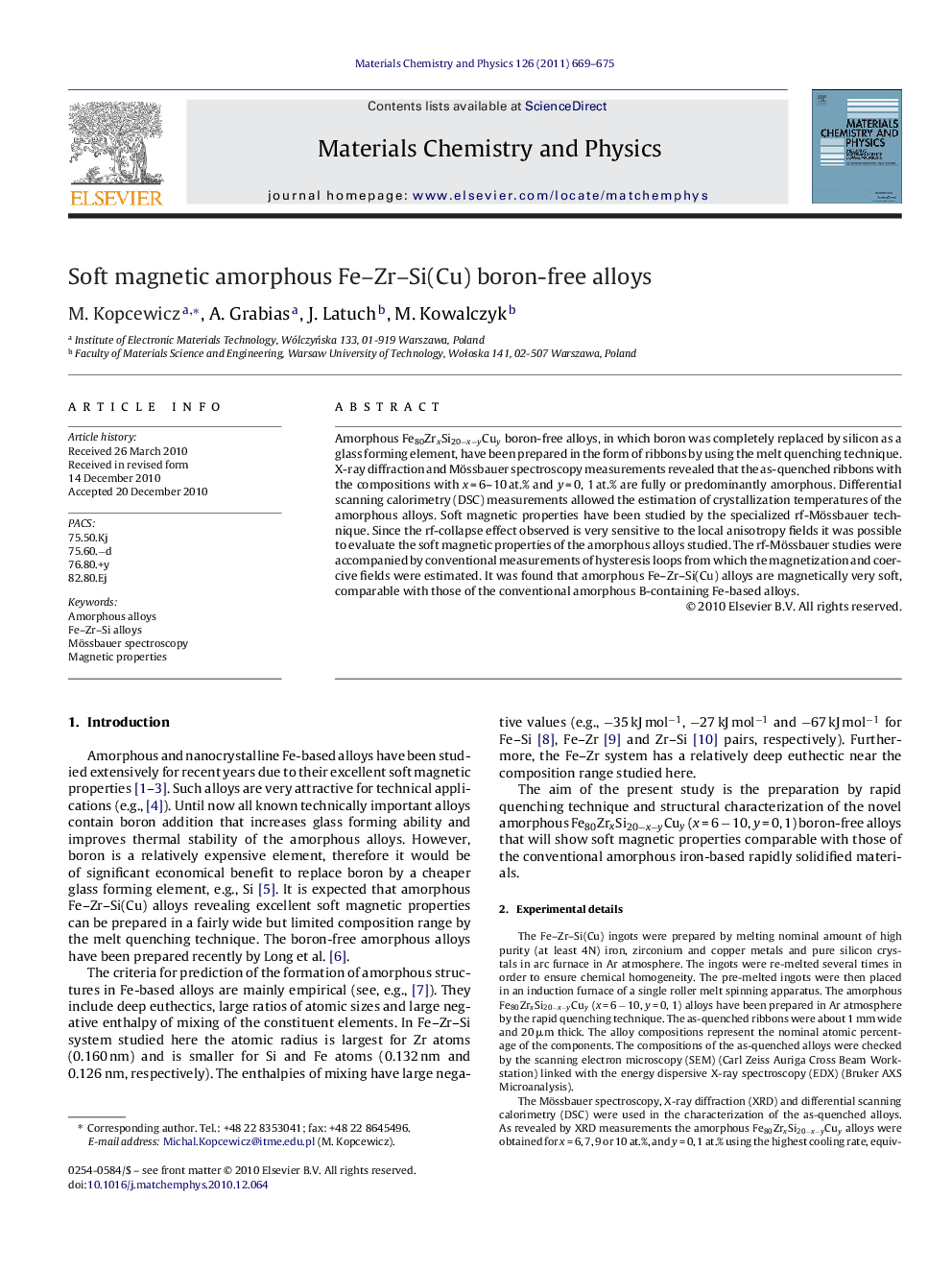| Article ID | Journal | Published Year | Pages | File Type |
|---|---|---|---|---|
| 1524952 | Materials Chemistry and Physics | 2011 | 7 Pages |
Amorphous Fe80ZrxSi20−x−yCuy boron-free alloys, in which boron was completely replaced by silicon as a glass forming element, have been prepared in the form of ribbons by using the melt quenching technique. X-ray diffraction and Mössbauer spectroscopy measurements revealed that the as-quenched ribbons with the compositions with x = 6–10 at.% and y = 0, 1 at.% are fully or predominantly amorphous. Differential scanning calorimetry (DSC) measurements allowed the estimation of crystallization temperatures of the amorphous alloys. Soft magnetic properties have been studied by the specialized rf-Mössbauer technique. Since the rf-collapse effect observed is very sensitive to the local anisotropy fields it was possible to evaluate the soft magnetic properties of the amorphous alloys studied. The rf-Mössbauer studies were accompanied by conventional measurements of hysteresis loops from which the magnetization and coercive fields were estimated. It was found that amorphous Fe–Zr–Si(Cu) alloys are magnetically very soft, comparable with those of the conventional amorphous B-containing Fe-based alloys.
Research highlights▶ Amorphous Fe–Zr–Si(Cu) boron-free alloys were prepared by melt quenching. ▶ Soft magnetic properties were investigated by the specialized rf-Mössbauer technique. ▶ Dependence of coercivity and magnetization on alloy compositions was determined.
